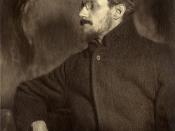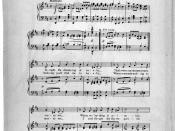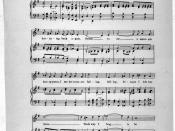Short Fiction Unit: Literary Essay
Blindness is defined as being "unwilling or unable to perceive or understand" (Blind,Dictionary.com). "Araby" by James Joyce discusses the presence of blindness directly. "Araby" presents an image of North Richmond Street "being blind", which foreshadows Joyce's sightlessness further on through his experiences (287). At the end of North Richmond Street there is an uninhabited house that isolates and detaches itself from the "other houses on the street, conscious of decent lives within them" (287). It identifies and couples the focus of blindness with light and darkness to enhance the overall recurrence of Joyce's lack of sight. James Joyce's theme of blindness is the most prominent throughout the entire storyline of "Araby". The reoccurring theme of blindness in "Araby" is reinforced by the boy's blindness to the former priest that used to live in his house, the beauty of his friend's sister, what he thinks is his first love, and the idea of Araby.
The house of the deceased priest that was the former tenant of the boy's house, used to live in the back drawing room which is where the boy finds three stories that the priest had read. In the "musty" and "enclosed" room, there lay the stories of The Abbot by Walter Scott, The Devout Communicant and The Memoirs of Vidocq, it seems as though the common element in each of the stories that the priest read involved deceit (287). The Memoirs of Vidocq, is about a corrupt police officer who was a thief and used his job to hide his crimes. As deceit would come to mind for many people, the boy's blindness keeps him from seeing that the stories may have been uncovering hidden desires or possible actions...


